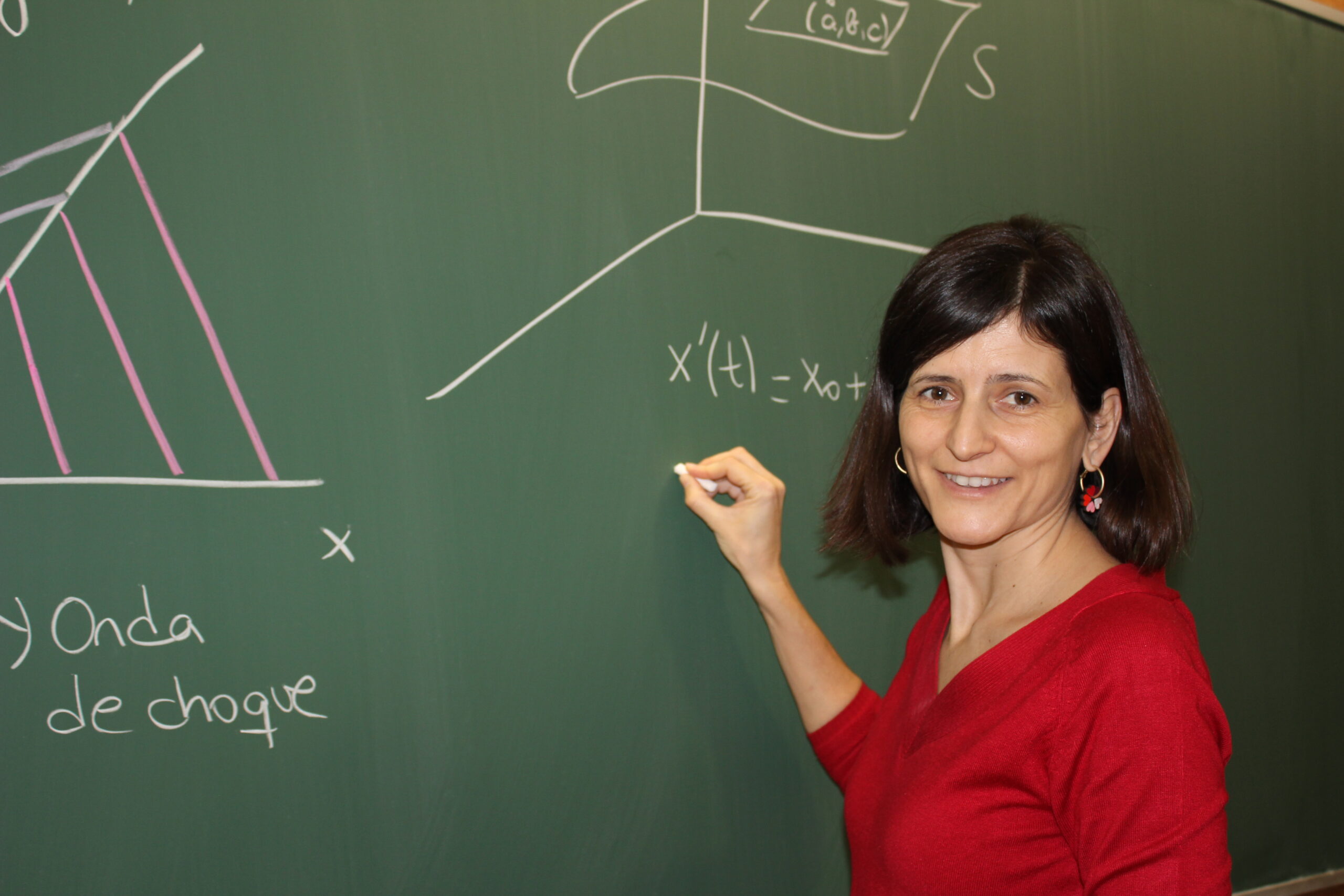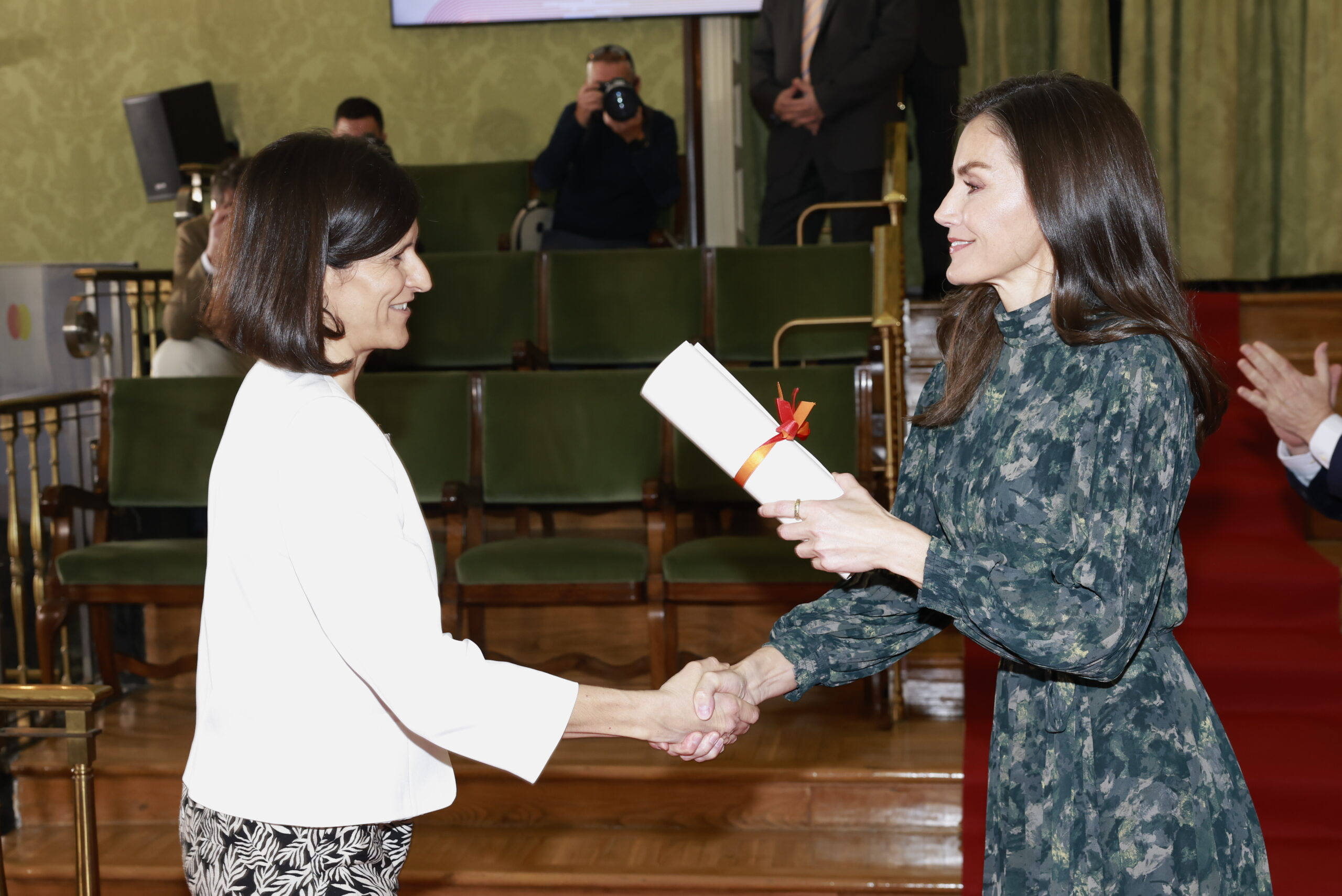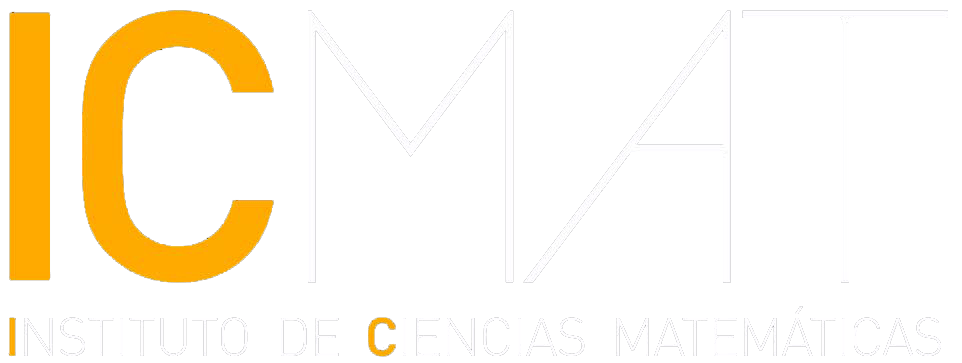
Ana Primo is a specialist in partial and nonlinear differential equations. Image: Laura Moreno Iraola/ ICMAT.
Ágata Timón G-Longoria (ICMAT-CSIC)
On February 11, Ana Primo, a member of the Institute of Mathematical Sciences (ICMAT) and associate professor at the Autonomous University of Madrid (UAM), received the Young Female Scientific Talent Award in the ‘Mathematics’ category, granted by Mastercard and the Royal Academy of Sciences of Spain Foundation (FRACE). Primo is an expert in partial and nonlinear differential equations. The jury recognized “her research on problems with nonlocal effects, such as elasticity, water waves, crystal dislocation, obstacle problems, flame propagation, stratified materials, or quasi-geostrophic flows.” We spoke with her in the days following the award.
Where do the types of questions you seek to answer in your research come from?
To study models in physics, biology, engineering, … or even behavior in social networks, we rely on analyzing different interacting variables. A very powerful tool for studying these interactions is differential calculus. Specifically, I focus on a branch of this calculus known as partial differential equations.
In particular, you study singular points in these types of equations. What are they?
They are special points that appear in the model and affect the behavior of the solution. For example, a specific point that generates a lot of heat in a chemical reaction, which then diffuses through space until it reaches equilibrium. Or a star, or a light source radiating from one point to its surroundings. Or an opinion posted by a user on a social network that goes viral and spreads to all their contacts, then propagates in a cascade. Or a cell that mutates into a cancerous one and starts multiplying uncontrollably.
What kinds of questions are asked about these objects?
We ask how the presence of these singular points affects the existence and regularity of solutions to different types of equations—elliptic, parabolic, hyperbolic—and how they interact with other terms, such as gradient powers. Even the simplest version of these singularities—an inverse power, such as the Hardy-Leray potential—already generates very interesting and difficult problems, going beyond what we know as classical theory, developed in the 18th and 19th centuries.
“We have achieved a concrete interpretation of equations where multiple solutions can exist, which appear in financial or biological models.”
What advances would you highlight on this topic?
In recent years, we have developed new tools, such as improved functional inequalities, that allow these limit problems to be addressed in other spaces, making it easier to understand singularity from another perspective. This way, we have been able to classify solutions to nonlinear problems, providing a concrete interpretation of mathematical models where multiple solutions can exist, such as in reaction-diffusion equations with gradients, which appear in stochastic control, financial models, or biology.
Which of your contributions to this topic would you highlight?
In the elliptic and parabolic framework, both the local case and the nonlocal case, I would highlight the combined interaction of a lower-order term—the gradient power—with these types of singular potentials. Together with my collaborators, we demonstrated the existence of a critical exponent beyond which no solution exists, not even in the weakest possible sense. These models appear in optimal control—in Hamilton-Jacobi equations—in surface smoothing studies—the Kardar-Parisi-Zhang model—or in flame propagation studies.
In the framework of the electromagnetic Schrödinger equation with critical singular potentials, I would highlight the derivation of a solution representation formula, which involves a family of Strichartz-type inequalities.
What problems are you currently working on?
I am currently studying the influence of these singular potentials on Lane-Emden systems. Depending on the presence of other nonlinearities—stemming from the powers of the unknown or the gradient—we demonstrate the existence of critical curves that separate regions of existence and non-existence of solutions. We are also trying to study the influence of these singular potentials in the context of the wave equation.
What led you to choose this career path?
I imagine it was a love of learning, curiosity…
“What I love most about mathematics are the moments of beauty it offers.”
What do you enjoy most about your work?
What I love most are the moments of beauty it offers. And the opportunity it provides to meet very interesting people, from different perspectives, with whom it is a true pleasure to progress.
Day-to-day work is very stimulating. I love arriving at the Faculty in the morning, excited to solve that doubt I’ve been pondering for some time. Additionally, I enjoy teaching because it allows me to share beautiful results that I deeply admire and respect, as they are the fruit of the work of brilliant scientists.
When I return home, even on days when nothing works out, I feel satisfied because I always learn something new and realize how much more there is to learn. And that is truly exciting.

Ana Primo received the Young Female Scientific Talent Award in the Mathematics category from Queen Letizia. Image: Casa Real.
The award is for “female talent.” What role do you think female talent plays in mathematics research today?
In my scientific career, I have had the privilege of meeting women of impressive mathematical talent, whom I deeply admire from various perspectives. The presence of women in mathematics is real, but it could be greater. I believe a deep reflection is necessary on the reasons behind this reality and identifying the moment and causes that generate this gap. Women make up half of the population, and society should not waste that talent.
“Women make up half of the population, and society should not waste that talent.”
Do you have any advice for children who want to pursue mathematics?
I would tell them to follow their passion with determination and enthusiasm. There will be difficult moments when things don’t work out, but they must keep moving forward. Suddenly, everything starts to fall into place, bringing moments of great satisfaction. Learning never stops.
I would also tell them to enjoy the journey and the people who accompany them on it.
This content has been automatically translated. The original text may differ slightly
